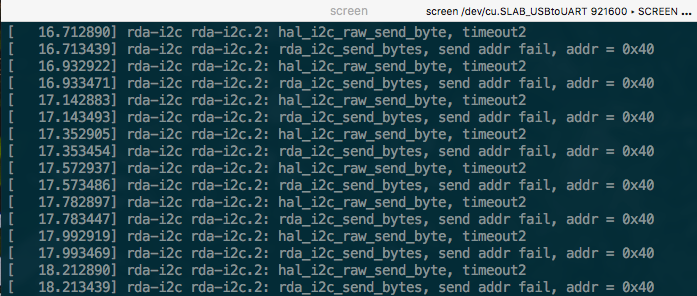There are some bugs which can really get on your nerves. I've been trying to connect to my Orange Pi, and you have to connect via serial, because my Orange Pi got not display or HDMI. The first thing I wanted to see was some serial output. I switched the Orange Pi over to boot from NAND.
And so I connected my serial adapter with the board and started screen with the correct baud rate:
screen /dev/cu.SLAB_USBtoUART 921600
Also the board does not automatically creates an WiFi access point, where you could ssh into it or something like that. First I tried it with screen, but that did not work out. Then I tried it with the PySerial implementation in PlatformIO and voilla it worked. On Linux I tried using the screen-command. So I tried the following command in Mac OS X:
screen /dev/cu.SLAB_USBtoUART 921600
and it just won't work. I don't know exactly why this is happening but you can start screen with sudo and it won't work either. And there have been some similiar reports:
I'm really glad that I'm not the only one with this issue :D ... And there is an Stackoverflow question right about this 'bug'. The proposed solution from Stefan in his Blog is relatively simple:
stty -f /dev/cu.usbserial-141A 921600 & screen /dev/cu.usbserial-141A 921600
What this does, is practically setting the baudrate with stty and then starting screen. Unfortunately this did not work for me, but the solution that worked, was the Two-Terminal-Solution mentioned at Stackoverflow. So just use screen in one terminal tab.
screen /dev/cu.SLAB_USBtoUART 921600
And then set the Baudrate as superuser in another terminal tab.
sudo stty -f /dev/cu.SLAB_USBtoUART 921600
To exit Screen just use: Ctrl-A followed with k for kill.


If you press this Button it will Load Disqus-Comments. More on Disqus Privacy: Link